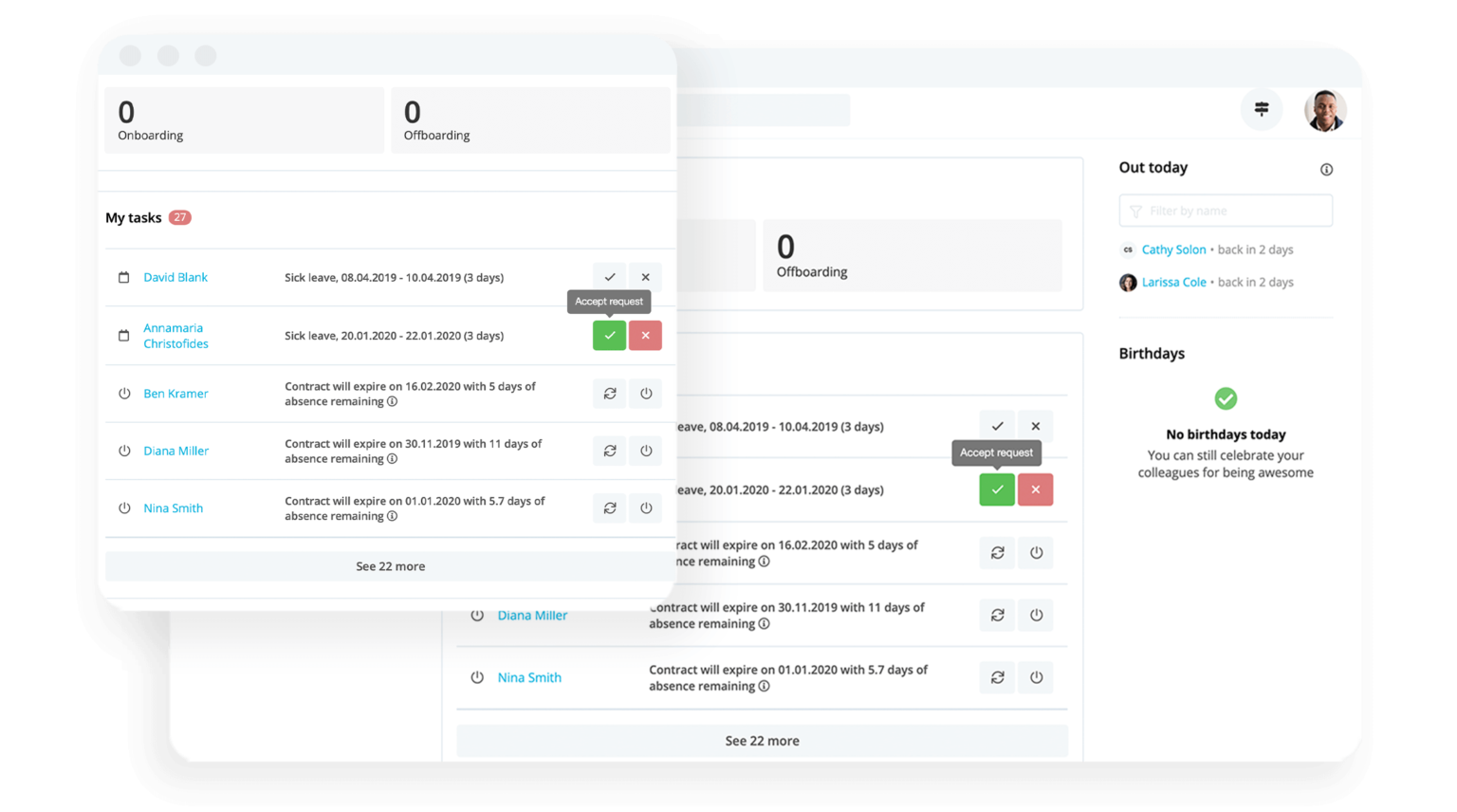The 9 Belbin Team Roles for Success

What are the Belbin team roles? For any organisation to succeed, it needs clearly-defined roles and responsibilities from top to bottom. In this article, we offer a way to think about these roles through the prism of the Belbin team roles model.
Key Facts
The Belbin team roles theory helps identify each employee’s personal strengths and weaknesses to define the roles in which they may thrive.
Belbin's theory defines nine team roles divided into three categories: Action-Oriented, Thought-Oriented and People-Oriented.
Finding each member's strengths and weaknesses is a process of reflection, self-assessment and discussion performed by the employee.
Contents
What Is a Team Role?
In the view of British psychologist Meredith Belbin, who developed the Belbin Team Role theory, team roles are patterns of behaviours that influence how employees contribute to the workplace and connect with others. This determines how an individual’s contributions to the group advance the organisation’s primary goals. These roles allow people to leverage their strengths in the workplace. Implementing the theory also ensures a healthy balance of various roles, which in turn covers any potential weaknesses. More than that, it clarifies who is responsible for what and who they should consult to resolve specific obstacles.
What Is Meant by Belbin Team Roles?
Belbin Team Roles identifies behavioural strengths and weaknesses, fitting them into one of nine roles for greater teamwork.
What Are The Nine Belbin Team Roles?
The Belbin theory defines nine distinct roles, each of which falls into one of three categories: Action-Oriented, People-Oriented or Thought-Oriented.
Action-oriented team members mainly try to complete assigned tasks on-time and with the expected quality. People-oriented employees build relationships and leverage that support to turn in the best work possible, while thought-oriented team members brainstorm innovative solutions to complex problems.
1. Action-Oriented Shaper
The Shaper (SH) maintains forward momentum on a project. Their drive to reach the next milestone motivates the team to do their best work and meet deadlines. People who fall into this role are typically extroverted, are comfortable expressing opinions and have a positive demeanour. They can remain calm under pressure and encourage their team to do the same. However, their outspoken nature may lead to conflicts if they say something another team member doesn’t want to hear.
2. Action-Oriented Implementer
Implementers (IMPs) are adept at turning plans into actionable steps. They take responsibility for a project, act as its driving force and define the practical aspects to meeting the next milestone. Team members who fall into this role are often the most reliable and organised in a group. While they’re often efficient in planning, their desire to organise the group's efforts can lead to inflexibility when presented with new ideas.
3. Action-Oriented Complete-Finisher
The Complete-finisher (CF) is focused on ensuring the project's end result is of the highest quality possible, correcting errors and double-checking accuracy. Detail-oriented people are often found in this role. Like the Shaper, the CF drives the team to reach the finish line, so no momentum is lost at the final stretch.
These employees are often meticulous and mind the quality of even the most minor details. However, that worry might become anxiety that causes them to look for errors far longer than necessary. That worry also makes them reluctant to accept help when needed.
4. People-Oriented Coordinator
Coordinators (COs) refer to team leaders who manage team members and figure out how best to leverage their skills. They balance achieving project objectives with ensuring everyone within the team feels comfortable and supported. COs delegate tasks to ensure that everyone can work at their best.
Usually, confident and good-natured employees become coordinators. They’re calm in stressful situations and can make reasoned judgement calls at a moment's notice. However, guidance can come off too forceful if done poorly and certain coordinators may use their authority to avoid doing their share of the work.
5. People-Oriented Team Worker
A Team Worker (TW) focuses on interpersonal relationships within the group. However, the project's result is a secondary concern to the person in this role, the first being maintaining good group cohesion. A Team Worker is instrumental to a collaborative atmosphere within the group, which means everyone’s opinions are respected and their needs met.
Caring or nurturing individuals in tune with others’ needs often end up in this role. Their perceptive natures let them spot problems and mediate before they escalate into bigger ones. Their preference for diplomatic solutions, however, tends to make them non-confrontational and indecisive in tense situations.
6. People-Oriented Resource Investigator
A resource investigator (RI) is often a team’s main researcher, evaluating a situation from all angles. It’s often the most independent role within the group, searching external sources for information and bringing what they learned back to the group.
RIs are often extroverted and knowledgeable about various work-related topics. Their research is fuelled by a passion for the project and a drive to see it succeed. However, their enthusiasm can wear off quickly, decreasing productivity.
7. Thought-Oriented Plant
The Plant (PL) in your group is the most creative and the primary source of new ideas. They can look at problems from all angles and devise unconventional, innovative solutions. Those solutions may not be perfect, but they always kickstart the group’s brainstorming process.
Generally, PLs are imaginative freethinkers adept at solving problems with answers that others might not have thought of. However, they tend to get caught up in their unique thought processes and may not consider budget or staffing constraints.
8. Thought-Oriented Monitor-Evaluator
The Monitor-Evaluator (ME) is an impartial employee who generates objective conclusions on the project based on analysis. These team members report on the project's progress and what the team can achieve.
MEs are often reserved but listen intently to the group to gather information and generate reasoned responses. Also, since many of their emotional reactions are focused inwards, they can remain composed in stressful situations. However, their quiet demeanours may not be the most inspiring, particularly if their analysis is overly critical of the group.
9. Thought-Oriented Specialist
Specialists (SPs) have a high degree of knowledge in an area related to the project. Unlike the other roles, a Specialist is often brought in from outside the immediate team. By the nature of the role itself, people who fall within it often possess great insight into their chosen niche and can offer valuable insights to the team. However, due to their specialisation, they can only contribute one way to the team's success.
What Are the Benefits of Belbin Team Roles?
Using Belbin Team Roles can benefit your company's long-term health and your team's effectiveness. Below are a few advantages you can expect if you decide to implement the theory, such as:
Better team productivity. Belbin Team Roles primes each team member for success by setting them up for success from the beginning. Taking their skills into account also helps increase motivation, leading to a more effective team.
Greater team collaboration. Belbin’s theory helps each team member understand their colleagues better. This insight makes it easier for the group to progress towards a common goal because they can readily leverage each strength and cover each weakness.
More efficient use of personal skills. Assigning team members to predefined roles makes it easier for leadership to give tasks to the right people. Also, the group can utilise this knowledge when encountering an obstacle, knowing the best team members to go to for a solution.
What Are the Drawbacks of Belbin Team Roles?
While the Belbin theory can provide several benefits, it may not be right for every business. Some notable drawbacks include:
Simplifies team dynamics too much. Belbin team roles don’t account for nuance within a group. Some team members will show an affinity for two roles, while other employees’ skills may evolve over time, making them more suitable for a different role. Belbin doesn’t offer much guidance for dealing with either scenario.
It can’t apply to every project. The nine roles in Belbin’s theory are relatively rigid and, as a result, aren’t always a perfect fit. It also doesn’t account for individual differences that may affect team dynamics on different projects.
Bias may affect role assignment. A team’s strengths and weaknesses are usually collected through a self-assessment to assign each member their role. That’s vulnerable to personal bias as employees over- or under-estimate their skills.
How To Use Belbin Team Roles
Honest self-reflection and discussion are the keys to successfully using Belbin’s Team Roles theory. Your team members will have to outline their strengths and weaknesses so they can be assigned to a role. While not every role needs to be filled, you should strive to have an equal balance between action-oriented, thought-oriented and people-oriented positions. There are four steps to gain this information from your team:
For a big group, divide the members into equally-sized teams but leave a smaller group together.
Each team should draw a circle and divide it into nine sections corresponding to the team roles. Then the members write their names in the segments for their top two roles.
From there, have the members of each group discuss their strengths and weaknesses while noting how they compare and contrast with their colleagues.
Finally, with the information gathered, have them develop strategies for how the team can best support each other during the project.
Frequently Asked Questions about Belbin Team Roles
What Are Belbin’s Nine Team Roles?
The nine team roles of Belbin’s theory are:
Shaper (SH)
Implementer (IMP)
Complete-finisher (CF)
Coordinator (CO)
Team Worker (TW)
Resource Investigator (RI)
Plant (PL)
Monitor-Evaluator (ME)
Specialist (SP)
What Are the Three Categories of Belbin Roles?
The nine roles are further grouped into three categories:
Action-Oriented, pertaining to work
Thought-Oriented, pertaining to ideas
People-Oriented, pertaining to interpersonal relationships
Are All Team Roles Needed at All Times?
No. The active roles should be relevant to the group's objective.
How Do You Find the Right Employee for the Right Belbin Team Role?
The team conducts a self-assessment that identifies their strengths and weaknesses, organising them by which role they’re best suited for.
Find Where Your Team Can Thrive
Organisation and communication are crucial to forming a successful team. The better a group of people understand each other and how they contribute to the team's process, the more productive they are in practice.
The Belbin Team Roles were developed to help clearly define each individual's strengths and weaknesses to connect them with specific roles that demonstrate their responsibilities.
Using this theory promotes an understanding between each team member that helps create a collaborative environment where everyone thrives.
Disclaimer
We would like to inform you that the contents of our website (including any legal contributions) are for non-binding informational purposes only and does not in any way constitute legal advice. The content of this information cannot and is not intended to replace individual and binding legal advice from e.g. a lawyer that addresses your specific situation. In this respect, all information provided is without guarantee of correctness, completeness and up-to-dateness.


